Rhode Island Red is one of America’s most well-known breeds of chickens. The Rhode Island Red Rooster is iconic, distinctive and often featured on everything from hand towels to pottery.
Their proud posture, deep rich color, and large stature make them a popular fowl. Their excellent breed qualities keep them at the top of the list for chicken enthusiasts.
History of Rhode Island Reds
Back in 1890, Rhode Island Red (RIR) was described as practical, profitable, and prolific. That description of these birds is still true today. Rhode Island Red roosters are used to breed (RIR) hens that are capable of laying 200-300 eggs a year.
Where did these magnificent roosters get their start? It all began with a series of chicken breeding experiments back in 1854 by a man named William Tripp. Tripp was a sea captain who made trips from England to New Bedford, Rhode Island.
During one of these voyages, Tripp met another sailor from England who was carrying a red Malaysian rooster aboard his ship. Tripp was stunned by his attractive appearance. He immediately bought the rooster and set it free to breed with the hens in his flock.

Tripp was thrilled with the results. The mating with his new rooster produced chickens that were better tasting and laid more eggs. Eager to continue his experiment, Tripp began to crossbreed his birds with his friend’s birds.
By exchanging birds, the men were able to refine the qualities they desired and minimize inbreeding.
As the chickens improved, chicken farmers wanted to purchase refined birds. At this time, the chickens were called “The Macomber” or “Tripp’s Fowl”. Tripp even sold them to an influential chicken farmer in American, Isaac Champlin Wilbour, on his voyage back to Rhode Island.
Wilbour had a successful poultry business but was always searching to improve his flock. After purchasing Tripp’s Fowl, he began his own crossbreeding program. Wilbour was the forefather of the RIR we know today.
| Feature | Rhode Island Red Chicken |
|---|---|
| Purpose | Dual Purpose (meat and eggs) |
| Egg Color | Brown |
| Egg Size | Large |
| Broody | No |
| Heat Tolerance | Yes |
| Cold Tolerance | Yes |
| Comb Type | Single Comb, Rose Comb |
| Egg Production | 200-300 per year |
| Chicken Skin Color | Yellow |
| Life Span | 5-8 years |
| Adult Weight (Hen) | 6.5 lbs |
| Adult Weight (Rooster) | 8.5 lbs |
| Backyard Friendly | 4/5 |
Breed Standard and Appearance
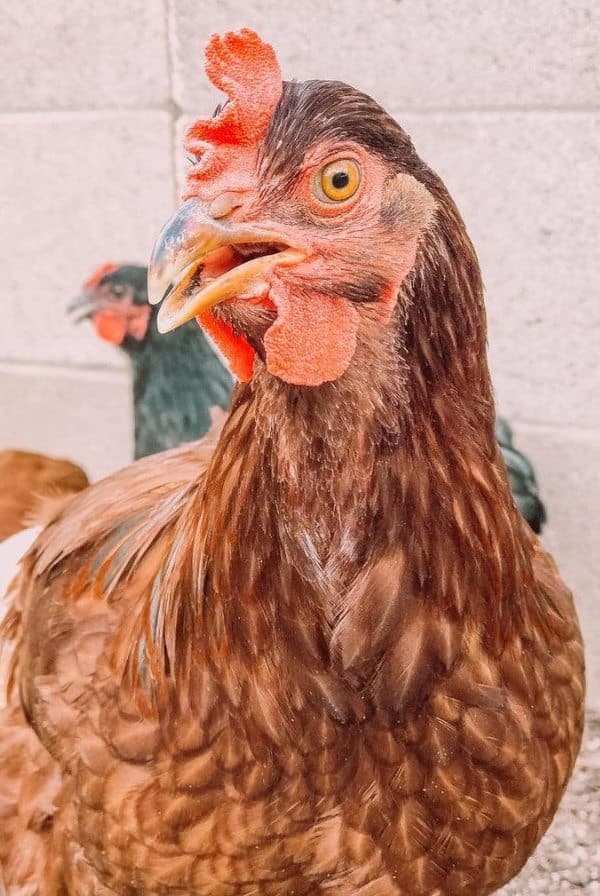
Today, Rhode Island Red roosters are one of the most popular and successful chicken breeds. This multi-purpose breed has excellent qualities which make it a great choice for everyone from the backyard chicken enthusiast to homesteaders.
Breed Standard:
- Class: American
- Purpose: Meat, Eggs
- Type: Large Fowl
- Size: Roosters 8.5 pounds, Hens 6.5 pounds
- Rarity: Common
- Varieties: Single Comb, Rose Comb
Appearance:
One distinguishes an RIR rooster by his tall and proud stature and his bright mahogany red coat adorned with shining black tail feathers highlighted by hints of green.
The hens will be a lighter shade of red with black lacings. Earlier generations of Reds were not bred for color, this a more modern trait.
The rooster’s comb may either be single or rose-comb. A single comb has rows of spikes while the rose comb is flat with no spikes. Either way, the combs will be vivid as are the earlobes and wattles.
These birds have orange-red eyes and reddish, brown beaks. Their feet and legs are yellow and sometimes present red on their toes and shanks.
There are two strains within the breed, industrial and the old-type. Industrial birds may be smaller and paler in color. There has been some debate over the years as to the required shade for chickens in an exhibition.
The American Poultry Association (APA) in 1961 called for rich, brilliant red for males and rich red for the females.
Personality and Temperament
Many chicken owners who have raised different varieties feel that RIR is one of the most personable of all the chicken breeds. It may be hit or miss when it comes to the personalities of the roosters.
As cockerels, they seem friendly and non-aggressive. This personality may or may not change as the hormone production increases.
As far as roosters go, their personalities are a dice roll. There are stories of RIR roosters raised in the same environment. Some were sweet as pie while others were bullies and felt the need to attack everything in their kingdom.

A poll on the topic of RIR rooster temperament revealed that 66% voted they are mean, and 33% voted they are friendly. There were comments that hatchery grade tends to be more aggressive than the heritage breed.
As for the tendency to crow, this is also a trait that can’t be determined. If your RIR rooster is by himself and doesn’t feel any threat from intruders or other males, he will probably not crow as much.
If there is more than one rooster, there will be daily crowing competitions beginning just before sunrise.
Rhode Island Red Chickens Breeding Season
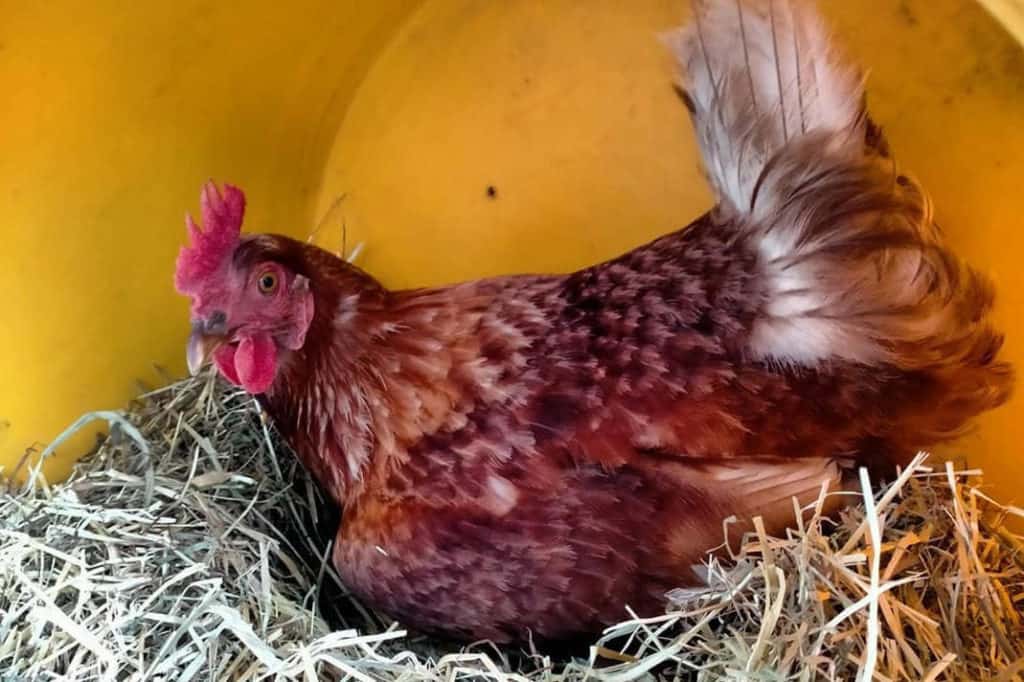
RIR males tend to be more aggressive during the breeding season. As mentioned previously, heritage strains tend to be more docile.
Poultry Keeper believes that if you have more than one male, they will do better in a free-range environment as they will have more room to set up individual territories. This will make them less defensive.
If you do have an aggressive male, it is recommended to keep children away from him. RIR males do have long, sharp talons. One chicken owner reported that while he was painting his coop, his RIR rooster came up behind him and impaled his calf with his talons.
The wounds were an inch deep into his calf muscle. Needless to say, that story did not end up well for the rooster!
Males can be quite aggressive toward the hens during the breeding season. Do not be surprised if you see feathers missing and wounds from the rough treatment of the roosters.
If you have more than one rooster and a weak hen, they may physically harm her as they compete to breed. You may need to remove her to avoid permanent damage or death.
Care and Health Issues

RIR are very active in their foraging. They will reduce your bug population and may even go after mice and frogs. While they will tolerate confinement, they do best when ranging around the yard. They are good about returning to their coop in the evening if you establish that as their home base.
Like all chickens, RIR should have a proper roosting area, access to food and clean water. Their diet will vary if you are raising them for meat or for eggs. Roosters have different needs than hens but will do fine with whatever you are feeding your hens.
RIR are very hardy. They have robust features due to their Malay genes. They do well even in the colder northern climates. In extremely cold temperatures you may need to provide a heat lamp to protect the combs from frostbite.
The RIR is generally known as a healthy and active breed. Be sure to check for parasites and mites on a regular basis. If your rooster has access to areas of sand and soil where he can take dust baths, he will be less susceptible to parasites. Otherwise, you may need to dust with a commercial product.
Special Care of Rhode Island Red Chickens
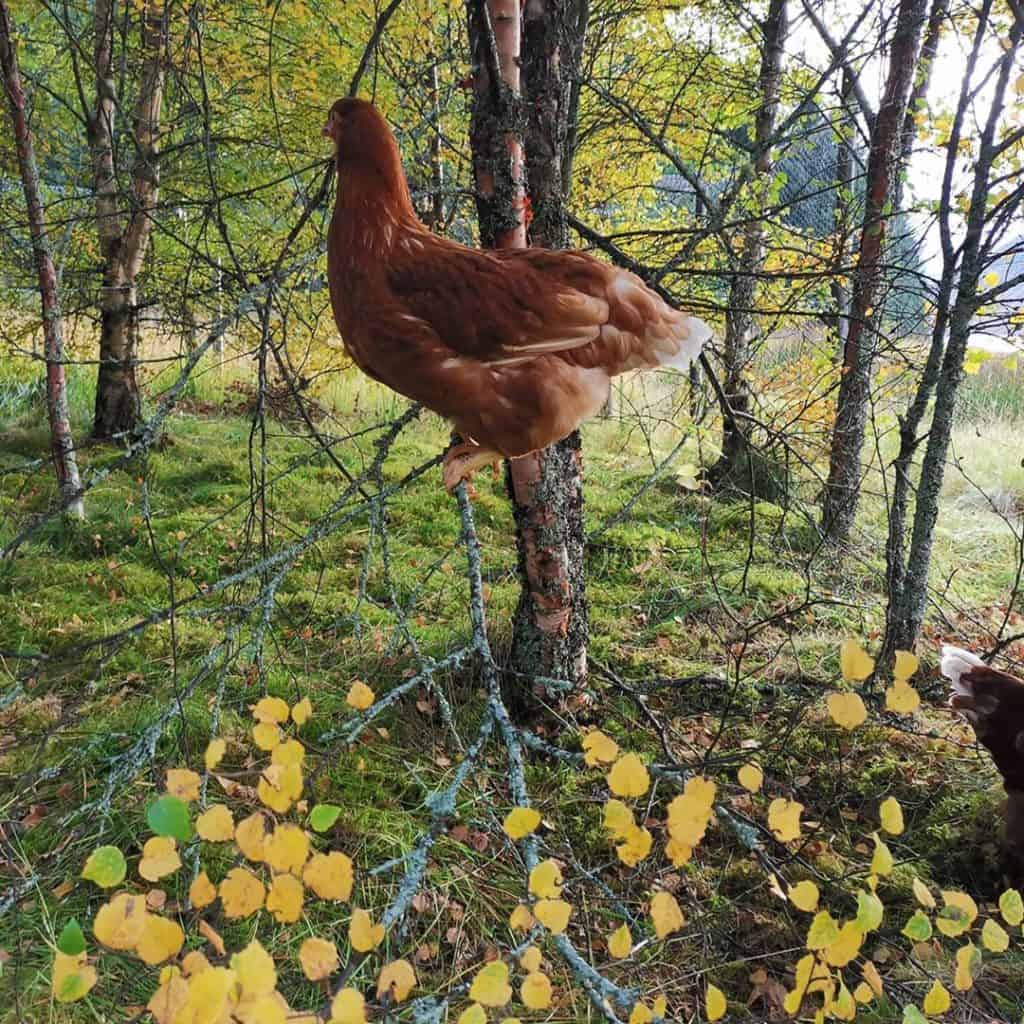
Special considerations may come into play if you have an overly aggressive rooster. If your rooster has become a danger to people, other rooster or hens, you may want to consider a spur reduction.
While these leg daggers serve a purpose in nature, they are not always an asset in captivity. They may even get so long that they curl back on themselves causing damage to the rooster’s own legs. There are three ways of reducing their size:
- Filing. The outer shell of the spur is made of keratin. Like fingernails or horses’ hooves, they can be filed. This can be accomplished with a Dremel tool with a sanding attachment. You will need to immobilize your rooster by wrapping it firmly in a towel or blanket. Stop before you reach the bone so you don’t hurt or injure the bird.
- Clipping. Like pet claws, spurs can be trimmed by clipping them. Select clippers that will fit around the spur. Make sure they are sharp so the procedure goes more smoothly and quickly. Clip the top of the spur but again, stay clear of the bone. You can use a metal file to round and smooth the edges.
- Remove the Sheath. The outer sheath of a spur can be removed with less risk than clipping or filing because there is no need for sharp tools. For this procedure, you will use pliers and two potatoes.
Heat the potato in the microwave for about 10 minutes or until fully cooked. Insert the spur into the hot potato. Be careful it does not come in contact with his shank – he will not be happy. Leave the spur in the hot potato for three minutes. This will soften the sheath.
As soon as you take the potato away, grab the spur with the pliers. Simply twist and pull and you should be able to easily remove the sheath. Repeat this process on the other side. If it does not work the first time, heat the spur for another two minutes.
Tips for Raising Rhode Island Red Chickens
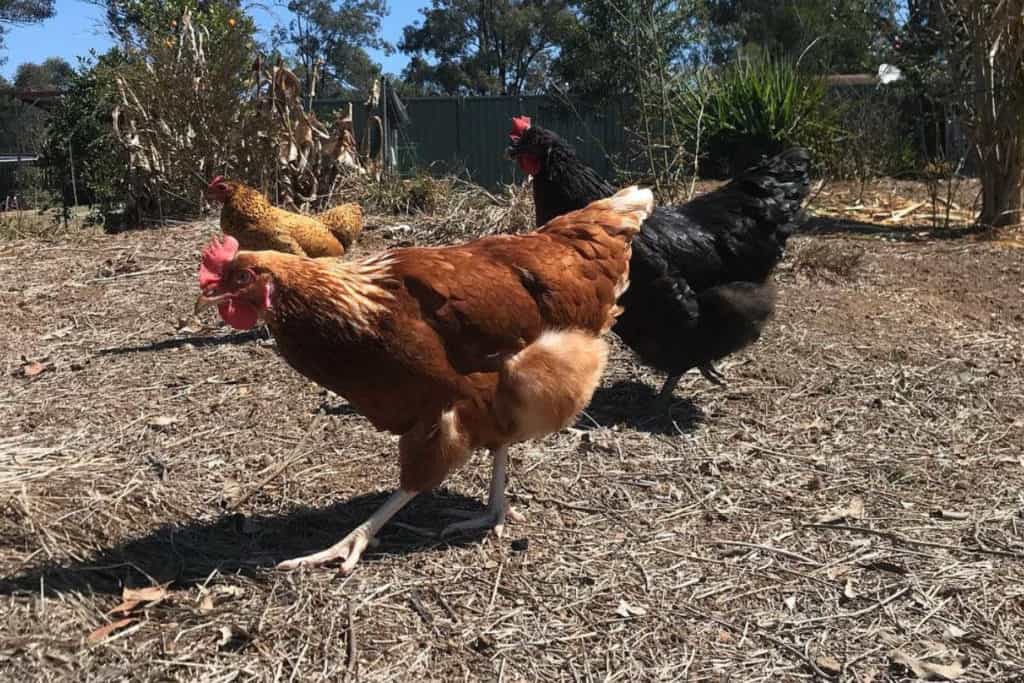
The RIR breed does well either confined to a coop or free-range. If you do raise your chickens in cold climates, you can rub petroleum jelly on the combs when the temperatures are expected to remain below freezing for extended periods of time.
If you are raising your rooster for breeding, you won’t really know his personality and temperament until he begins to breed. Even if you have handled him a lot as a cockerel, his disposition may change.
Keep only one rooster if possible to reduce aggression. If you have more than 10 or 15 hens, you will need more than one rooster if you want fertilized eggs.
In situations where you need more than one rooster as your goal is to have all fertilized eggs, the more room you allow the better your roosters will get along.
If your goal is to raise rooster, taking the hens out of the equation will be more peaceful as there will be no girls to compete over. Raised in a flock, they will eventually establish a pecking order, especially if they have grown up together.
Summary
The bottom line with Rhode Island Red Roosters is that as a breed, RIR is chickens with lots of personalities. They are spectacular in their color and presence and are very hardy. They are a no-frills chicken as they have few health issues and are extremely easy keepers.
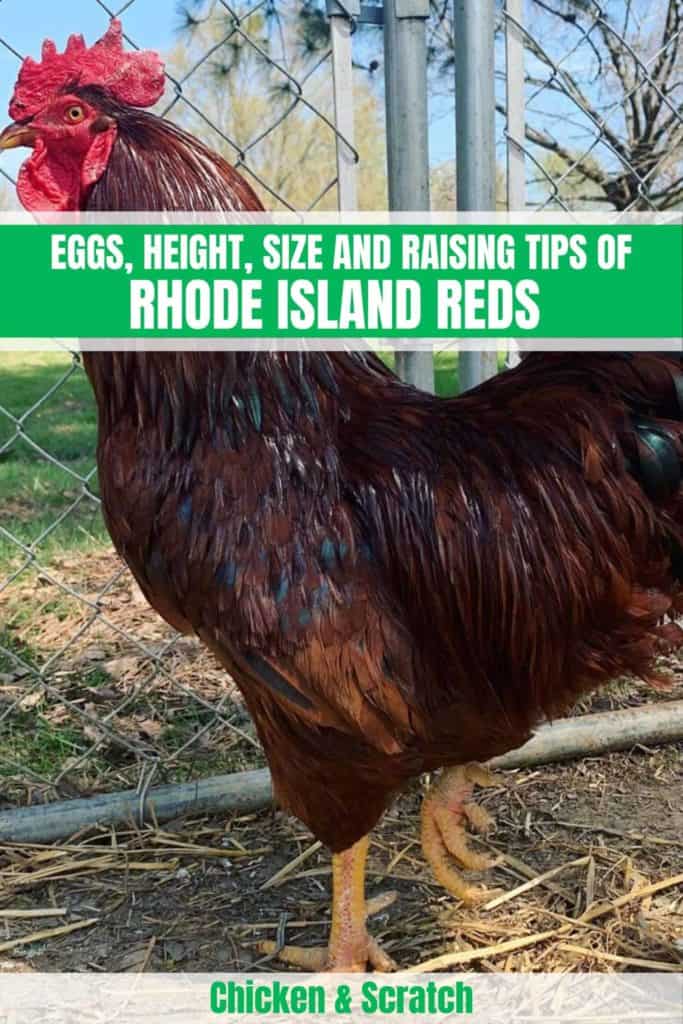

Joseph Hudson has been raising chickens for over 15 years. In 2018, he completed the Agriculture & Natural Resources program at Mt. San Antonio College. He currently raises over 1400 chickens on his 7.5-hectare farm. He keeps sharing his experience on raising healthy and happy chickens on Chicken Scratch The Foundry.









Would like to know the height of a full grown Rhode Island Red Hen not the weight but the height. Thank you
The height of a Rhode Island red hen.
Good day
I hope you can help. We got 3 RIR and we can’t figure out if they are hens or roosters, they are about 4-5 months old. No eggs yet? Is there any way to tell or just wait?
Thank you
Hi,
You can read our post: How to Sex Chickens: 6 Ways to Determine Hen Or Rooster
Although I’m sure you figured this out I thought maybe others may use the information!The males will be the first of the group to grow out their combs and waddles the females tend to grow out just before they are reaching maturity also the males tend to grow a little faster although one of my biggest roosters was my slowest grower (runt) there was a period where I had to take him in the house and clean his dirty butt before he got pooping down pat. Now he is the flocks leader ironically. Also. The males will show traits associated with being a rooster like rationing food or letting another eat before him early on. The hens combs are tight and small literally up to a week or so before they begin laying. Hope this helps
I would like to know as well how tall do the RIR get. Mine are 17 weeks and they sure are tall. I wonder how tall they will be when full grown.
I have 75 RIR . They are suffering coccidiosis . Use Amporium and liver tonic . But not good result . What can I do ?
Hi i want to own RIR but how? I don’t no ware to buy.